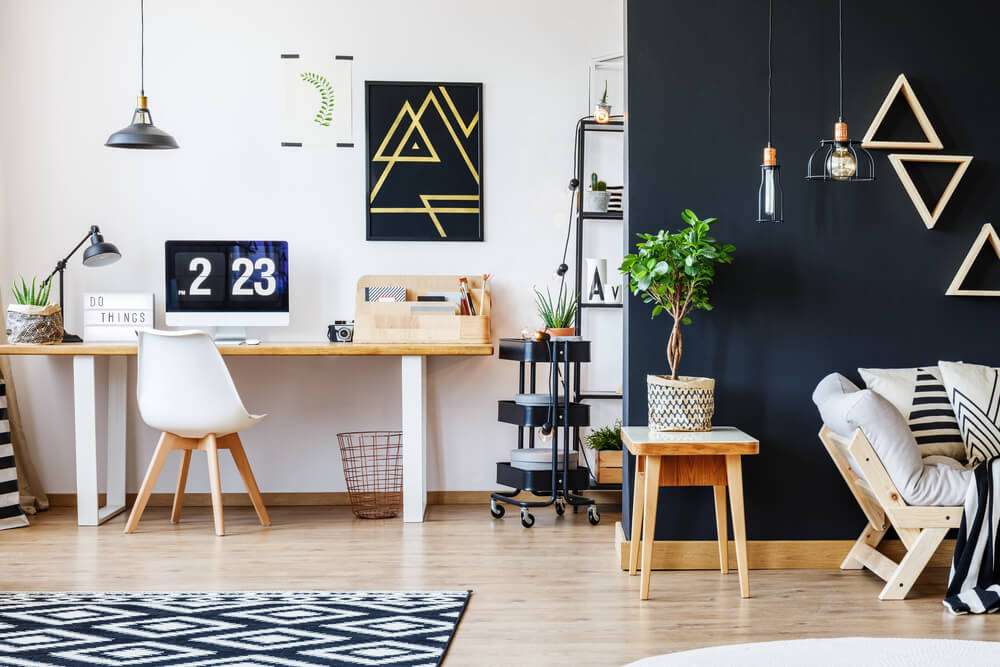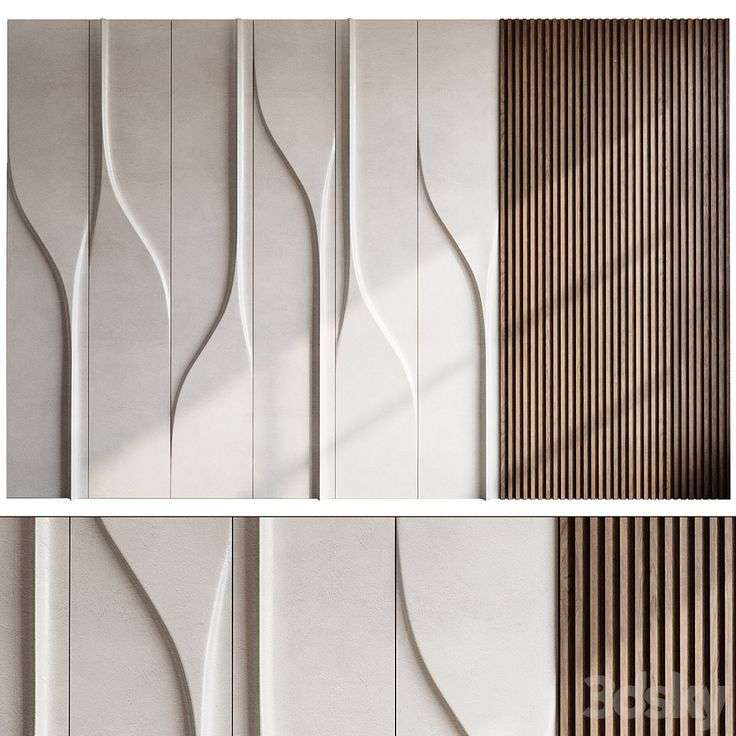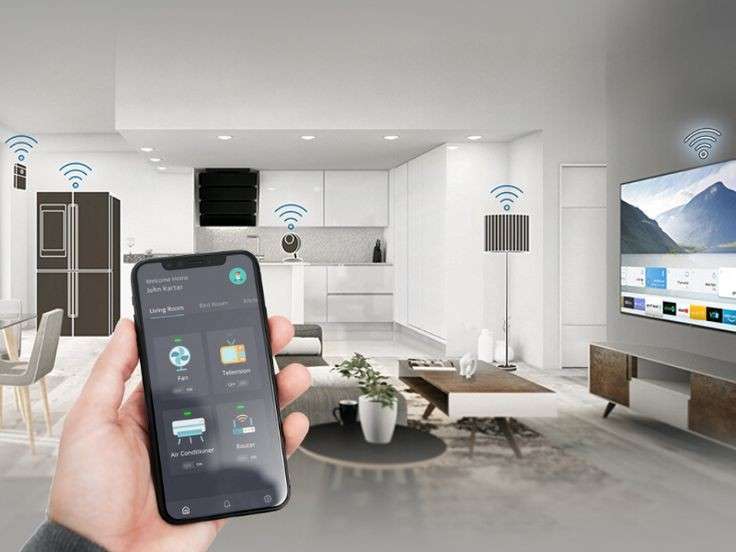The traditional workday has evolved, with many people opting for remote work or hybrid work models. As the lines between work and personal life blur, creating a home environment that can seamlessly transition between work and leisure is essential. Enter the concept of hybrid workspaces—designing spaces that combine the functionality of a home office with the relaxation and comfort of a leisure area.
A well-designed hybrid workspace can help boost productivity while providing a peaceful retreat to recharge after a busy workday. Let’s explore how you can effectively combine your home office and leisure areas into one multi-functional space that works for both your professional and personal needs.

1. Create Clear Zones Within a Room
One of the keys to designing a successful hybrid workspace is ensuring that both work and leisure zones are distinct, even if they share the same physical space. This helps you mentally shift between tasks and activities.
- Use furniture to define areas: Position furniture to create visual boundaries between the work and leisure areas. A sofa or bookshelf can serve as a natural divider without requiring major changes to the room.
- Area rugs: Different rugs can help delineate spaces. Use a more structured, neutral rug in the work zone and a softer, more colorful rug in the leisure area to clearly define each section.
- Lighting choices: Utilize different lighting in each area. In the office zone, opt for task lighting such as desk lamps or adjustable overhead lights, while the leisure area can feature softer, mood lighting, like floor lamps or pendant lights.
2. Optimize Furniture for Function and Comfort
Furniture is a crucial element when combining a home office and leisure area. You need pieces that are versatile, functional, and comfortable for both work and relaxation.
- Ergonomic office chairs: A comfortable, ergonomic chair is essential for long hours at your desk. But ensure it’s stylish enough to fit into a multi-use space. Consider chairs with a modern aesthetic that complement the rest of your decor.
- Convertible furniture: Look for furniture that can serve multiple purposes, such as a fold-out desk, a sofa that doubles as a guest bed, or a coffee table that transforms into a dining table. This saves space and enhances the functionality of the room.
- Comfortable lounge furniture: Your leisure area should include comfortable seating options like bean bags, lounge chairs, or a cozy sofa where you can unwind after work. Choose pieces that invite relaxation while still aligning with your home office style.
3. Incorporate Nature for Balance and Relaxation
Bringing elements of nature into your hybrid workspace helps to create a calming environment, improving both productivity and relaxation.
- Indoor plants: Incorporating greenery into your space can boost mood and air quality. Consider adding low-maintenance plants such as succulents, snake plants, or pothos. A small indoor garden or a few well-placed plants can help balance the work-focused energy of the office with the soothing calm of nature.
- Natural materials: Use natural materials like wood, stone, or bamboo for furniture or decor items. These elements add warmth and a grounding quality to the space, making it feel more relaxing and inviting.
- Natural light: Make the most of natural light to help reduce eye strain during work hours and create a bright, airy atmosphere. Position your desk near windows or opt for sheer curtains that allow sunlight to filter through. If your space lacks natural light, consider daylight-simulating bulbs to keep the room feeling fresh and energized.
4. Design for Flexibility and Adaptability
Flexibility is key in a hybrid workspace. The ability to easily switch between work and relaxation modes is essential for a smooth transition between tasks and activities.
- Multi-functional storage: Invest in storage solutions that keep both your work materials and personal belongings organized. Use shelving, cabinets, or multifunctional furniture like ottomans with hidden storage to keep things tidy and out of sight when not in use.
- Movable furniture: Consider using furniture on wheels, such as a mobile desk or portable lounge chairs, to easily adjust the layout depending on whether you need a dedicated work area or a space for leisure.
- Modular furniture: Modular pieces allow for a flexible design that can evolve with your needs. For instance, modular sofas can be rearranged to suit the space, while modular bookshelves or desks can be expanded or shrunk depending on the area’s function.
5. Personalize Your Hybrid Workspace
Creating a space that feels both productive and comfortable requires personal touches that inspire and motivate you. Incorporate elements that reflect your personality and interests, which will help the space feel uniquely yours.
- Artwork and decor: Add pieces of art, prints, or personal mementos that inspire creativity and relaxation. Whether it’s abstract art in the office zone to stimulate focus or calming nature prints in the leisure area, art can define the mood of each zone.
- Personalized accessories: Consider adding personal accessories such as scented candles, throw blankets, or decorative cushions to enhance the atmosphere. These small touches can make the space feel more inviting and balanced.
- Inspirational quotes: Display quotes or affirmations that motivate you during work hours and help you unwind during your leisure time. These can be framed on the wall or placed on your desk or shelf.
6. Ensure Comfort and Productivity
While relaxation is important, maintaining productivity in your hybrid workspace is equally crucial. Consider the elements that help you stay focused and efficient while still encouraging downtime.
- Noise control: Soundproofing your hybrid workspace can help maintain productivity, especially if you need to focus in a noisy environment. Use soft furnishings, carpets, or even noise-canceling headphones to reduce distractions.
- Task lighting for work: Good lighting is essential for staying productive. Ensure that your desk area is well-lit with adjustable task lighting to prevent eye strain.
- Comfortable seating for relaxation: When transitioning from work to relaxation, your leisure space should have comfortable, ergonomic seating that promotes unwinding. Consider a lounge chair or a recliner to relax in after a long day of work.



